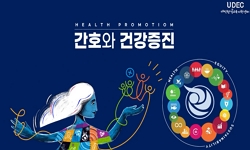Purpose: This scoping review explored the benefits and challenges of community-based rehabilitation (CBR) for stroke patients residing in rural areas, who often experience limited access to healthcare services. Methods: This review was conducted using...
http://chineseinput.net/에서 pinyin(병음)방식으로 중국어를 변환할 수 있습니다.
변환된 중국어를 복사하여 사용하시면 됩니다.
- 中文 을 입력하시려면 zhongwen을 입력하시고 space를누르시면됩니다.
- 北京 을 입력하시려면 beijing을 입력하시고 space를 누르시면 됩니다.

Benefits and Challenges of Community-Based Rehabilitation in Rural Stroke Patients: A Scoping Review
한글로보기https://www.riss.kr/link?id=A109691965
- 저자
- 발행기관
- 학술지명
- 권호사항
-
발행연도
2025
-
작성언어
Korean
- 주제어
-
등재정보
KCI등재
-
자료형태
학술저널
- 발행기관 URL
-
수록면
92-99(8쪽)
- DOI식별코드
- 제공처
-
0
상세조회 -
0
다운로드
부가정보
다국어 초록 (Multilingual Abstract)
Methods: This review was conducted using the Arksey and O'Malley framework. The literature published between 2013 and 2023 was identified through searches of four databases (PubMed, EBSCOhost, ScienceON, and DBpia) using keywords, such as "stroke," "rehabilitation," "rural areas," and "community." Fifteen studies met the inclusion criteria.
Results: Among the 15 studies identified, the majority (73.33%) were quantitative, comprised of randomized controlled trials and cross-sectional designs. Most studies originated from China (50%) and North America (31.25%). The interventions were primarily community- and home-based. Commonly used assessment tools included the Barthel Index (BI), Caregiver Strain Index (CSI), and Hospital Anxiety and Depression Scale (HADS). This review emphasizes the methodological diversity and critical role of family and caregiver support in rural stroke rehabilitation.
Conclusion: CBR benefits rural stroke patients by improving functional recovery, enhancing the quality of life, and reducing the caregiver burden while being cost-effective. Among the various intervention types, home-based programs and those using information and communication technology (ICT), such as smartphone applications and telerehabilitation, were particularly effective in improving accessibility and adherence. The personalized, home-centered approach of CBR addresses the diverse needs of rural populations. Strengthening the service provider capacity and developing supportive policies are essential for ensuring the sustainability of CBR and reducing urban-rural disparities in rehabilitation access.
Purpose: This scoping review explored the benefits and challenges of community-based rehabilitation (CBR) for stroke patients residing in rural areas, who often experience limited access to healthcare services.
Methods: This review was conducted using the Arksey and O'Malley framework. The literature published between 2013 and 2023 was identified through searches of four databases (PubMed, EBSCOhost, ScienceON, and DBpia) using keywords, such as "stroke," "rehabilitation," "rural areas," and "community." Fifteen studies met the inclusion criteria.
Results: Among the 15 studies identified, the majority (73.33%) were quantitative, comprised of randomized controlled trials and cross-sectional designs. Most studies originated from China (50%) and North America (31.25%). The interventions were primarily community- and home-based. Commonly used assessment tools included the Barthel Index (BI), Caregiver Strain Index (CSI), and Hospital Anxiety and Depression Scale (HADS). This review emphasizes the methodological diversity and critical role of family and caregiver support in rural stroke rehabilitation.
Conclusion: CBR benefits rural stroke patients by improving functional recovery, enhancing the quality of life, and reducing the caregiver burden while being cost-effective. Among the various intervention types, home-based programs and those using information and communication technology (ICT), such as smartphone applications and telerehabilitation, were particularly effective in improving accessibility and adherence. The personalized, home-centered approach of CBR addresses the diverse needs of rural populations. Strengthening the service provider capacity and developing supportive policies are essential for ensuring the sustainability of CBR and reducing urban-rural disparities in rehabilitation access.
동일학술지(권/호) 다른 논문
-
Effects of Optic Flow Stimulation on Gait Parameters in a Virtual Reality Environment
- 대한물리치료학회
- 이영민
- 2025
- KCI등재
-
Association Between Diabetes, Pre-diabetes, and Lung Diseases in Korean Adults
- 대한물리치료학회
- 이도연
- 2025
- KCI등재
-
- 대한물리치료학회
- 강준수
- 2025
- KCI등재
-
- 대한물리치료학회
- 신호진
- 2025
- KCI등재




 KISS
KISS






